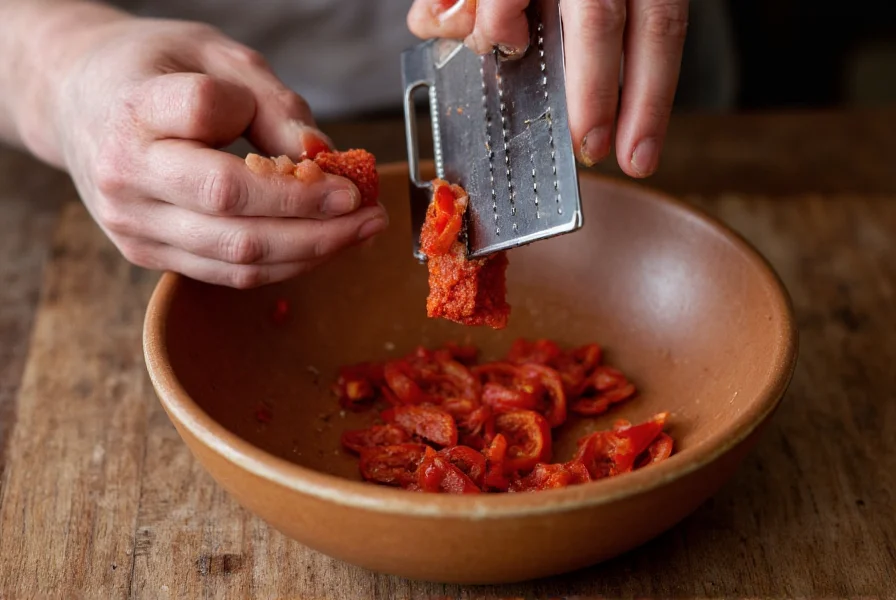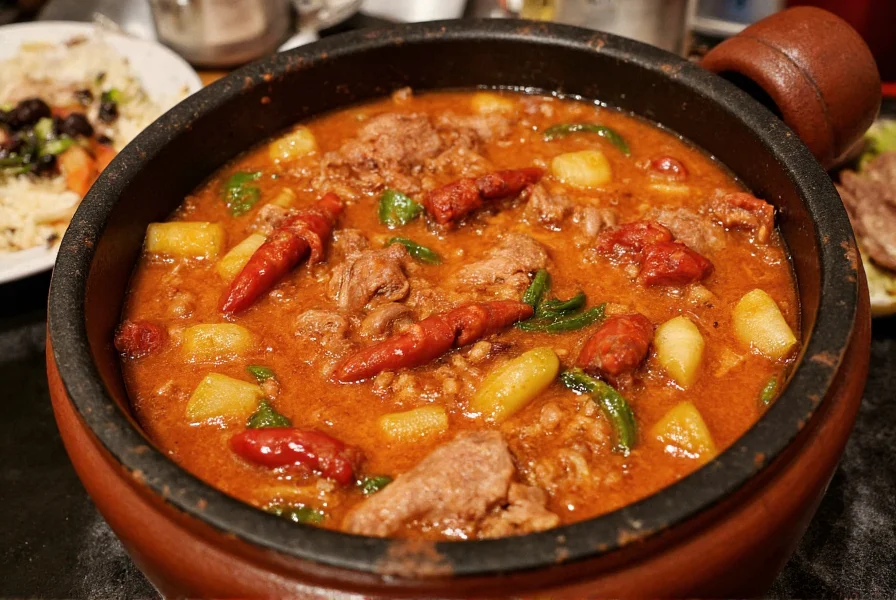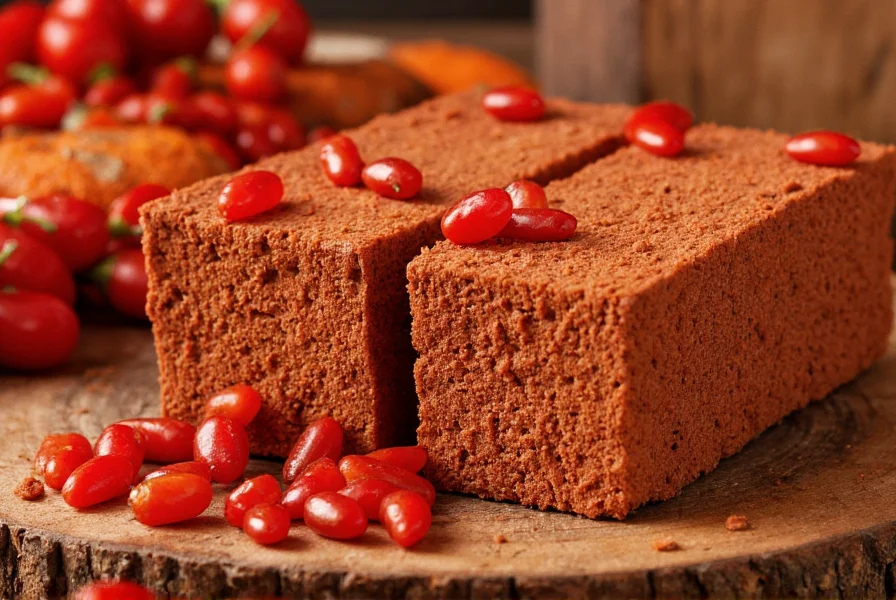Chili bricks represent one of the most versatile yet misunderstood ingredients in global pantries. These dense, brick-shaped condiments consist of finely ground dried chilies compressed into solid form, often with small amounts of salt or natural binders. Originating in Southeast Asian culinary traditions, they've gained international recognition among chefs seeking authentic, long-lasting heat sources that outperform conventional chili powders.
Understanding Chili Brick Composition and Characteristics
Unlike processed chili powders that often contain anti-caking agents and fillers, authentic chili bricks maintain purity through minimal processing. The brick form preserves capsaicinoids—the compounds responsible for heat—and volatile aromatic oils that typically degrade in powdered forms. This preservation explains why chefs prefer chili bricks for dishes requiring slow simmering, where flavor complexity develops over time.
When selecting quality chili bricks, look for uniform color (typically deep red to burgundy), absence of moisture spots, and a clean chili aroma without mustiness. Higher quality bricks use single-origin chilies rather than blends, allowing cooks to precisely control heat profiles. The texture should be dense but not crumbly—firm enough to maintain shape yet soft enough to shave or grate as needed.
| Chili Product | Shelf Life | Flavor Complexity | Best Culinary Uses |
|---|---|---|---|
| Chili Brick | 18-24 months | High (layered heat) | Stews, braises, slow-cooked sauces |
| Chili Powder | 6-12 months | Moderate (flat heat) | Dry rubs, quick sauces, seasoning |
| Chili Flakes | 12-18 months | Medium (immediate heat) | Pizza, finishing oils, quick dishes |
Traditional Preparation Methods for Optimal Flavor
Proper preparation unlocks a chili brick's full potential. The most effective technique involves shaving thin slices using a vegetable peeler or microplane grater. This method creates fine particles that dissolve smoothly into liquids without leaving gritty residue—a common issue when crumbling bricks by hand.
For immediate heat infusion, add shavings directly to hot oil during the "blooming" process, allowing flavors to meld with aromatics like garlic and ginger. In slow-cooked dishes, whole brick pieces can simmer for extended periods, gradually releasing complexity. Many professional kitchens maintain a dedicated "chili brick station" with specialized tools for consistent preparation.

Storage Techniques for Maximum Freshness
Chili bricks outperform powdered alternatives primarily through superior shelf stability. To maximize longevity when learning how to store chili bricks properly, follow these evidence-based methods:
- Wrap tightly in beeswax paper or parchment before placing in airtight containers
- Store in cool, dark pantries below 70°F (21°C)—refrigeration causes moisture absorption
- Include food-safe desiccant packets to prevent humidity damage
- Divide large bricks into meal-sized portions to minimize air exposure
When stored correctly, authentic chili brick shelf life extends to two years while maintaining flavor integrity—nearly double that of conventional chili powders. Check periodically for color fading or surface crystallization, which indicates degradation.
Signature Dishes Featuring Chili Bricks
Chefs worldwide incorporate chili bricks into diverse cuisines beyond their Southeast Asian origins. In Sichuan cooking, they form the backbone of mala (numbing-spicy) broths, while Thai kitchens use them in red curry pastes for depth without bitterness. Modern applications include:
- Chili brick-infused chocolate for artisanal desserts
- Smoked brick shavings in barbecue dry rubs
- Chili brick oil for pizza and focaccia finishing
- Marinades for proteins requiring slow flavor penetration
One professional technique involves creating a chili brick concentrate by simmering shaved pieces in neutral oil, then straining. This versatile base adds consistent heat to sauces, dressings, and soups without altering texture.

Avoiding Common Usage Mistakes
Many home cooks make critical errors when first using chili bricks. The most frequent issue involves adding whole bricks directly to dishes, resulting in uneven heat distribution. Instead, always prepare through shaving, grating, or controlled dissolution.
Another common mistake is confusing chili bricks with chili pastes or sauces—they serve different culinary functions. Bricks provide dry heat concentration, while pastes offer moisture and additional ingredients. Understanding this distinction prevents recipe failures when substituting chili brick vs chili paste in cooking.
Frequently Asked Questions
Can I substitute chili powder for chili brick in recipes?
While possible, substitutions require adjustment. Use 1 teaspoon chili powder for every 1/4 inch shaved chili brick piece, but expect less complex flavor and shorter shelf stability in your dish. For best results when learning how to use chili brick alternatives, add powder later in cooking since it degrades faster than brick form.
How do I measure chili brick portions accurately?
Professional kitchens measure by volume after shaving. A standard portion equals 1 teaspoon shaved particles per serving for medium heat. For precise control when exploring chili brick measurement techniques, use a microplane grater over a measuring spoon until reaching desired volume, as density varies between brands.
Are chili bricks gluten-free and vegan?
Pure chili bricks containing only dried chilies and salt are naturally gluten-free and vegan. However, some commercial varieties include wheat-based binders or non-vegan additives. Always check labels when seeking authentic vegan chili brick options, particularly for dietary restrictions.
Why does my chili brick develop white spots?
White crystallization typically indicates moisture exposure or natural sugar migration, not mold. If the brick remains firm with clean chili aroma, it's safe to use—simply shave off affected areas. Proper storage in airtight containers with desiccants prevents this issue when maintaining chili brick freshness long-term.











 浙公网安备
33010002000092号
浙公网安备
33010002000092号 浙B2-20120091-4
浙B2-20120091-4